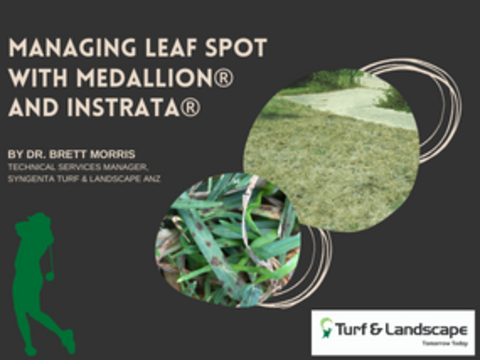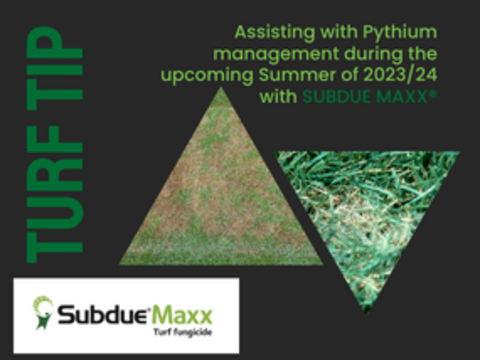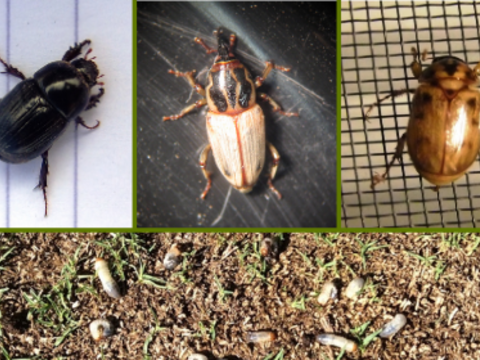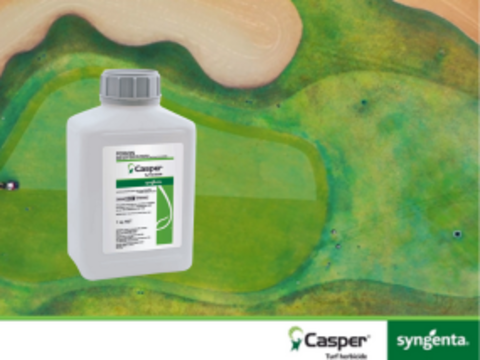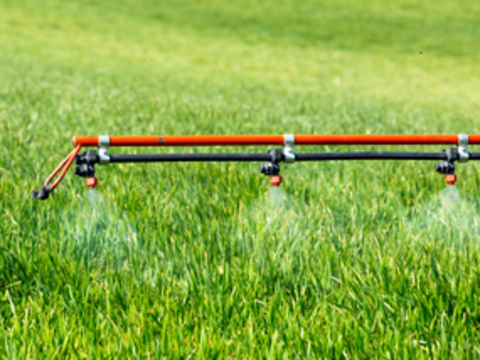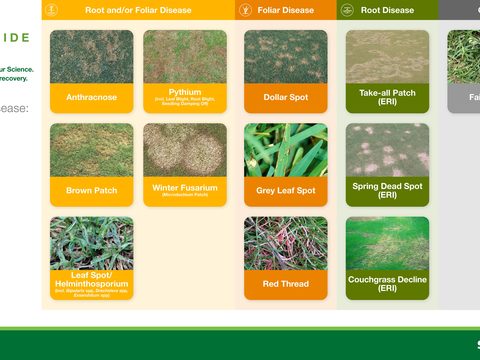Don't get stuck with Winter Weeds
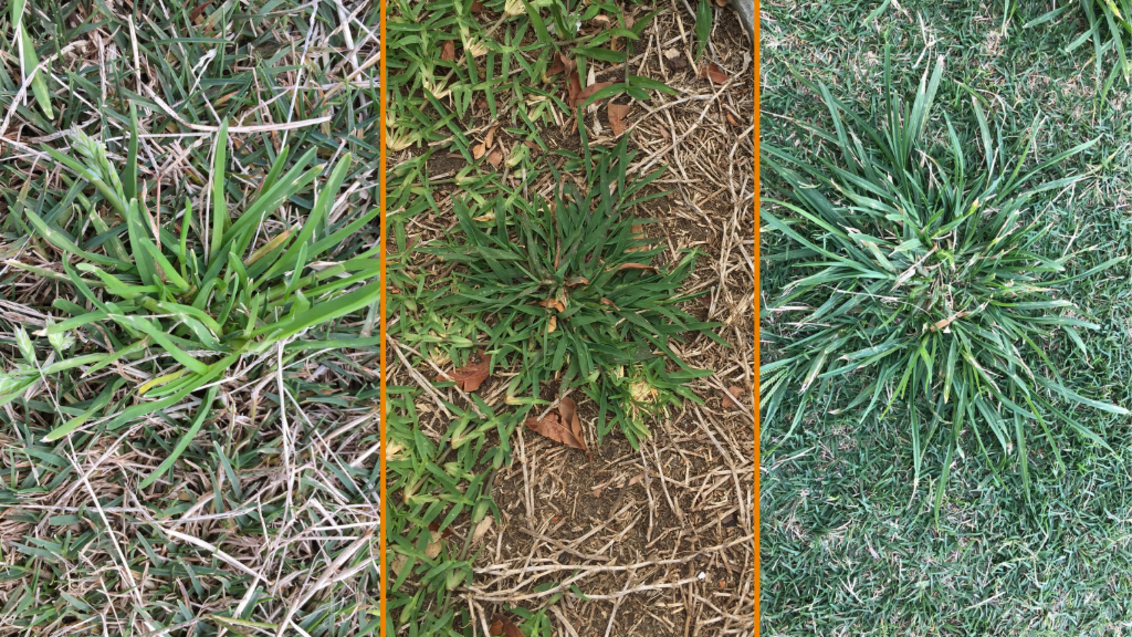
Set yourself free from weeds this winter
After the predominately good summer so far, many areas have experienced above average rainfall and there is good soil moisture (note: Syngenta’s Historical Weather tool can show you rainfall for the last 12 months at your location). This means weed control should be at the top of turf managers lists heading into late summer and early autumn. BARRICADE pre-emergent and MONUMENT post emergent herbicides provide a perfect partnership, both as single applications or as a power tank mix to set your winter season up for weed free outcomes.
But why bother with weed control? There's a few things to consider:
- Weeds compete for available resources: water, sunlight and nutrients.
- Weeds devalue and detract from the turf’s aesthetics and reduce playing conditions no matter what sport.
- Weeds reduce sod strength.
- Weeds will slow re-establishment of desirable species down.
- Weeds germinate 12 months of the year.
- Weed management really needs to be thought out and planned 1 to 2 years ahead to make sure the above does not happen on your turf facility.
Syngenta has solutions for most situations for both post and pre-emergent control. Which allows us to develop a sustainable and responsible weed control program that minimises the applications required to keep your turf facility weed-free for 12 months of the year. Pre-emergent control is your best option as these products reduce seedbanks year-on-year and can be used across a broad range of grass species. BARRIADE and MONUMENT create a perfect partnership of early control and ongoing prevention for difficult to control and detracting weeds from Autumn to Winter, including Poa annua / Wintergrass; taking out early germinated Poa while preventing additional germination from soil seed banks.
Pre-emergent solution: BARRICADE
BARRICADE should be used when the turfgrass is established and over-wintering.
BARRICADE pre-emergent herbicide reduces the heavy reliance and need for post control herbicides. This has the added advantage of reducing the likelihood of phytotoxicity from repeated herbicide applications. Resistance can also be better managed, especially for hard to control weeds like Poa annua.
If weeds are controlled before they become an issue, this not only reduces chemical applications during the season but also reduces the total inputs required to grow high quality turf, such as water and nutrients. With less weeds, there is less competition for these precious and expensive resources, saving you time and money.
BARRICADE should be applied to established turf or planted areas ONLY, for season long weed control (offering up to 6 months weed control).
Once applied it creates a:
- shallow immoveable herbicide barrier in the soil
- no off-target movement
- high soil and UV stability
BARRICADE works by:
- Group D pre-emergent – inhibitors of microtubule assembly
- prevents cell division in root tips and hypocotyls
- results in root tip clubbing of germinating weeds
- does not prevent germination but starves seedling very early
BARRICADE offers great flexibility with application:
- re-entry period is when dry on the leaf
- minimal PPE required
- up to 7 days to wash in after application
BARRICADE should only be applied to established turf once fully mature for up to 6 months weed control. You can vary application rates to vary longevity of weed control.
BARRICADE is now also registered for use in garden beds, which provides excellent long-term weed control, reducing the need to make multiple applications of labour-intensive knock down spray applications. One application per season is recommended for garden beds. BARRICADE can be sprayed over the top of turf and ornamentals and will not burn the turf or plant species.
Post-emergent solution: MONUMENT
The heavy hitter when it comes to the control of hard to manage grasses, sedges and broadleaf weeds in one product. If you are growing any Cynodon and Zoysia varieties, then MONUMENT should be kept close by. MONUMENT has also for many years been the standard go-to for persistent problems such as Kikuyu. Best application timing for Kikuyu management is Autumn. Full systemic action (xylem and phloem) with root, shoot and leaf uptake. Highly effective in controlling Poa annua, ryegrass, kikuyu, sedges and a wide spectrum of broadleaf weeds.
MONUMENT LIQUID Turf Herbicide
MONUMENT is used at very low rates per hectare and is available in a 1 L pack for larger areas and 100 mL pack size for convenience.
Once applied it:
- Fully systemic action (xylem and phloem) with root, shoot and leaf uptake
- Translocates to growth points
- Rainfast within 3 hours
MONUMENT works by:
- Group B post-emergent – inhibitors of acetolactate synthase (ALS inhibitors)
- Shuts down building blocks for growth
- Results in gradual and effective weed death
MONUMENT offers great flexibility with application:
- re-entry period is when dry on the leaf
- minimal PPE required
For best results with MONUMENT:
Non-ionic: For best results with MONUMENT, a non-ionic surfactant should be added as followed. Use Agral (600 g ai/L) at 0.42% v/v or 420 mL/100 L spray mix. Alternatively use other quality non-ionic surfactants (1000 g ai/L formulations) at 0.25% v/v or 250 mL/100 L spray mix.
Soil Temperature: Speed of weed death varies with soil temperature; expect 3–6 weeks in summer and 6–8 weeks in late winter. Avoid application when soil temperature drops below 14ºC as there is almost no activity below 12ºC. Consider the soil temperature at time of application, some herbicides are soil temperature sensitive and application in the middle of winter with soil temperatures below 12ºC may result in very little uptake by weeds and thus less than optimal control.
Spray Water pH: Test the water source and buffer to neutral if necessary before adding MONUMENT. MONUMENT is rapidly broken down in acidic conditions. Avoid tank mix partners that have potential to acidify the mixture (like phenoxy herbicides and some fertilisers). Observe the mixing instruction for MONUMENT LIQUID with regards to water pH and add a buffering to raise to ~pH 7.
Water application rate: Should be between 400–800 L/ha with higher volumes recommended for higher cut turf above 15 mm.
(NB: Always read the label to ensure it is safe to use on your grass species.)
Gain efficiencies with a tank mix
MONUMENT is tank mix compatible with BARRICADE to achieve post and pre-emergent control with the one application, for increased post emergent control, tank mix with CASPER.
The flexible wash in requirements with BARRICADE, up to 7 days post treatment, allows MONUMENT to stay on the leaf and do its job before wash in is required. Be sure to include a non-ionic surfactant to get the most out of MONUMENT even when tank mixing.
When tank mixing maintain water volumes between 400–800 L/ha with higher volumes recommended for higher cut turf above 15 mm.
Product selection is critical for a successful tank mix, as is keeping to best practise with the application, water rates, nozzle selection, wash in and most importantly timing. Learn more about tank mixing here.
Please always read the label before use.
For the most efficient use of the Syngenta herbicides, a programmed approach will offer increased results with less applications, saving time and money. A programmed approach will also allow for improved efficacy as smaller weeds are more easily controlled than larger ones. Leading to improved outcomes for your facility.
Contact your Syngenta Sales Representative or your local agent/distributor for further information.


